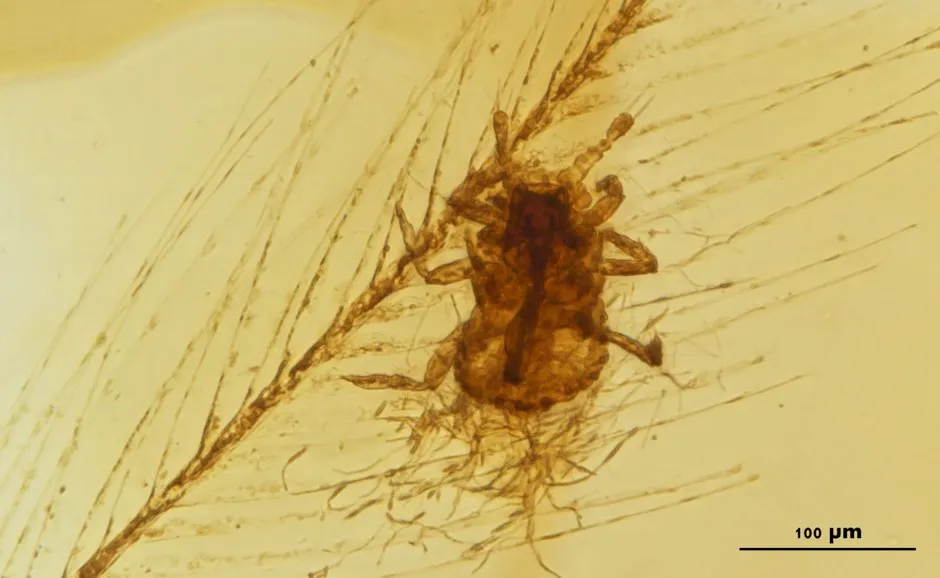Lice have been a problem since dinosaurs roamed the Earth.
They latched on to feathered dinosaurs, chewing away in a manner similar to the way the insects infest modern birds.
According to a study published in Nature Communications, the tiny insects were very similar to modern lice.
The new species, Mesophthirus engeli, was discovered along with partially damaged dinosaur feathers in amber approximately 100 million years old.
Researchers from Capital Normal University in Beijing, China, and the National Museum of Natural History, Smithsonian Institution in America, said there is a gap in the Mesozoic fossil record – the period from 250 million to 65 million years ago.
Because of this, the origins and evolution of feather-feeding behaviour by insects has remained unclear.

Creatures that feed on blood have been identified from both the Jurassic – 201 million to 145 million years ago – and Cretaceous – 145 million to 66 million years ago – periods.
But despite the prevalence of feathered dinosaurs at this time, bugs that may have fed on their feathers have not been reported until now.
Read more about new species:
- What was the first dinosaur?
- Nine animals named after rock bands
- Idris Elba 'honoured' to have new species of broccoli parasite named after him
Dong Ren, Chungkun Shih and colleagues studied 10 insect nymphs found preserved with two dinosaur feathers inside two pieces of amber from Kachin Province in northern Myanmar, also known as Burma.
They found that the wingless insects had similar bodies to modern lice and had strong chewing mouth parts.
One of the feathers discovered in the amber was damaged – apparently by chewing – in a similar manner to modern bird feathers being parasitised by lice.
Scientists said the findings suggest that parasites of feathers evolved during or before the mid-Cretaceous period and around the same time as the diversification of birds and feathered dinosaurs.

The authors wrote: “Most significantly, these insects are preserved with partially damaged dinosaur feathers, the damage of which was probably made by these insects’ integument-feeding behaviours.
“This finding demonstrates that feather feeding behaviours of insects originated at least in mid-Cretaceous, accompanying the radiation of feathered dinosaurs including early birds.”
In the study, researchers reported 10 nymph specimens of an ectoparasitic insect clade, which crawled and fed on two feathers preserved in two pieces of amber.
